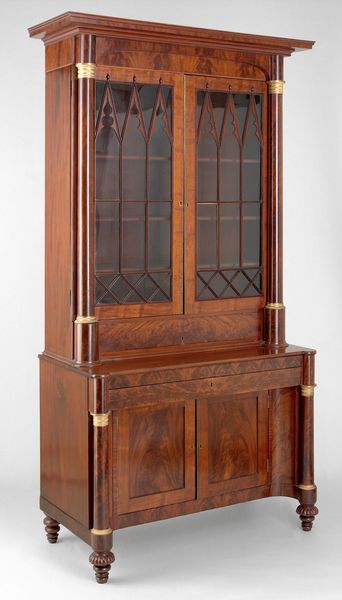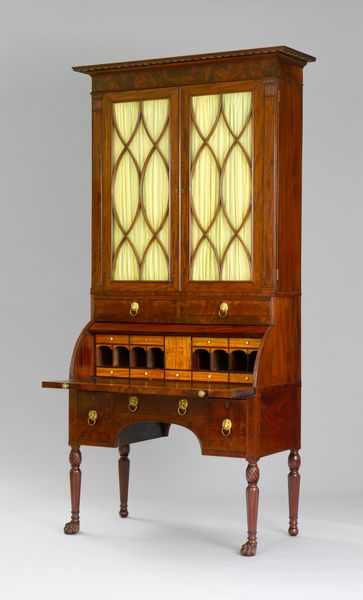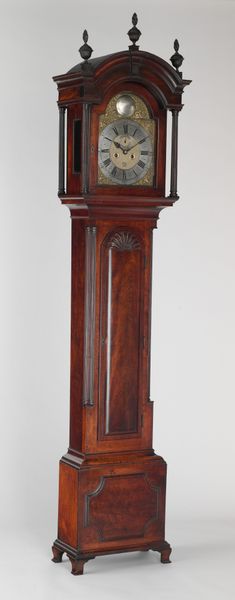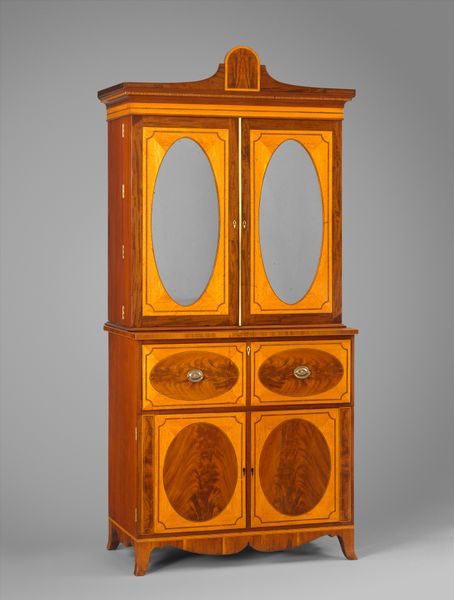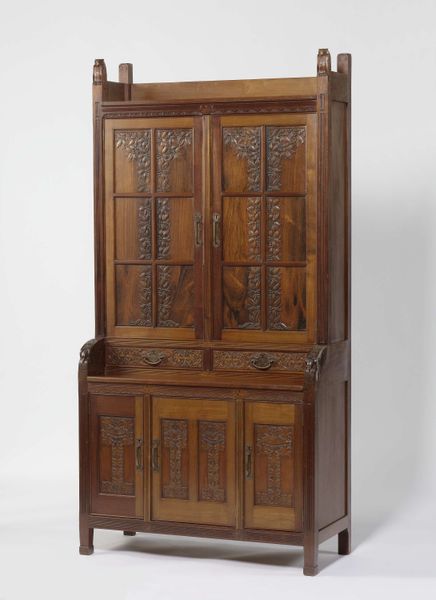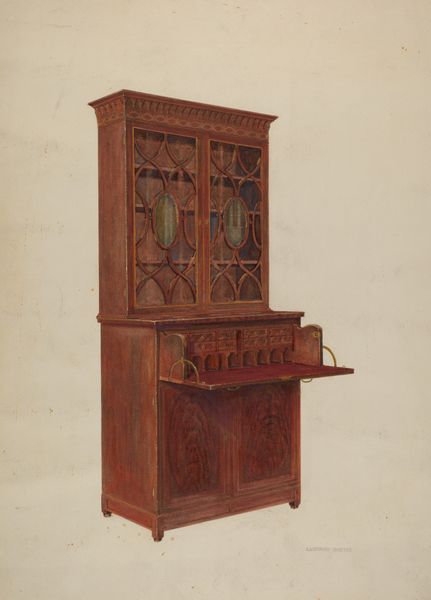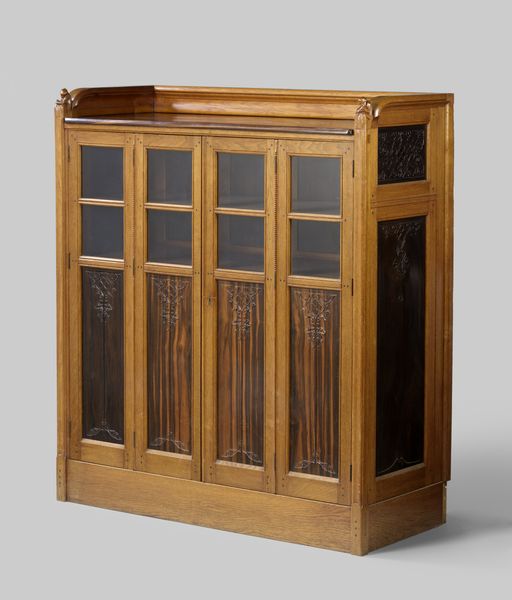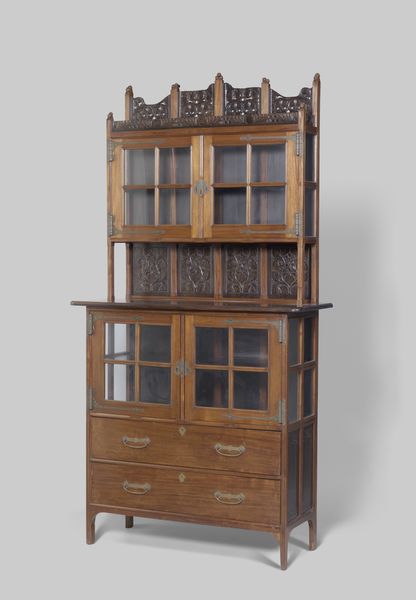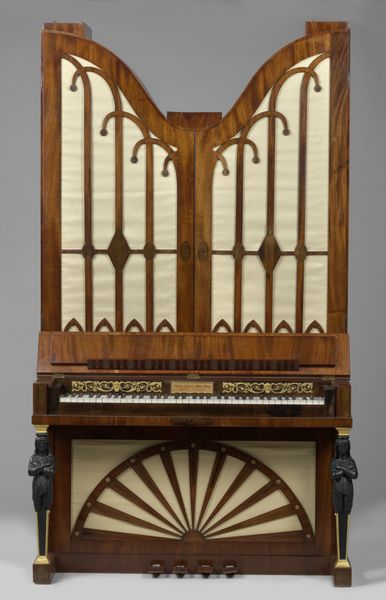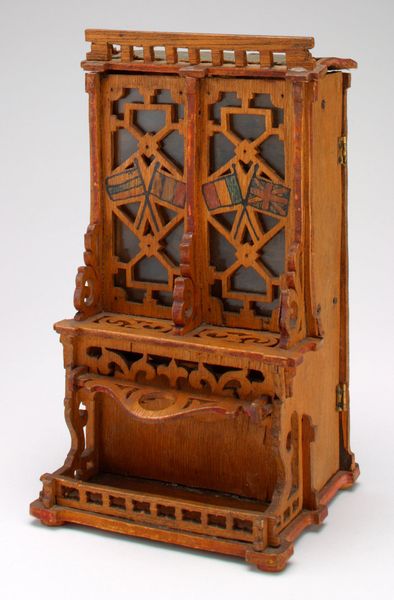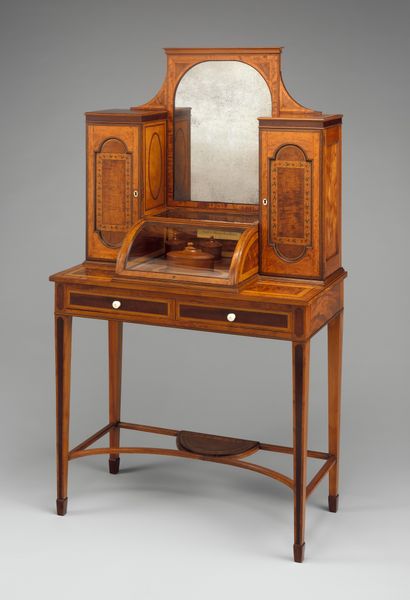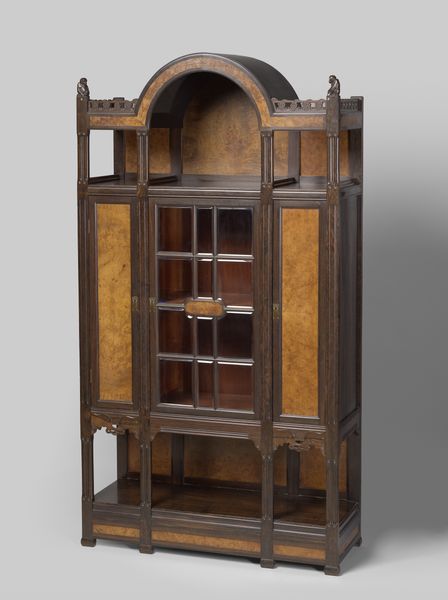
carving, wood
#
wood texture
#
carving
#
furniture
#
romanticism
#
wooden texture
#
united-states
#
wood
#
decorative-art
Dimensions: 91 3/4 x 52 3/8 x 23 1/4 in. (233 x 133 x 59.1 cm)
Copyright: Public Domain
Editor: Here we have the "Secretary," crafted between 1836 and 1850 by John and Joseph W. Meeks. It’s a striking piece of wooden furniture with beautiful carving. The dark wood and those intricate gothic details give it such a somber, almost ecclesiastical feel. How would you interpret this work in its historical context? Curator: The Gothic Revival style became quite popular in the US during this period, often signifying a yearning for established traditions and values. The “Secretary” embodies this sentiment. What statement do you think using religious architecture as an aesthetic makes, particularly in a domestic object produced in America? Editor: I guess it’s like bringing a sense of history and permanence into the home. The church associations must’ve lent a feeling of stability, especially in a relatively new nation. Curator: Exactly! Furthermore, consider the role of decorative arts in shaping social identity. Elaborate furniture like this “Secretary” became symbols of wealth and taste, revealing a new level of consumer culture. Does knowing that impact how you see the piece? Editor: Absolutely! I hadn’t considered it as a status symbol. Now I'm wondering how accessible this type of furniture would have been, and how that accessibility affected social perceptions. Curator: These are crucial questions to consider when understanding the power dynamics and aspirations of the era. Recognizing that the display of this piece reinforces class hierarchies changes my understanding, somewhat. Editor: I completely agree. I never would have considered those factors looking at the craftsmanship and Romantic style alone! Thank you for helping me think more deeply about the social forces behind the object. Curator: My pleasure. Seeing art through that lens really changes how we appreciate its history and the forces at play in its creation and reception.
Comments
No comments
Be the first to comment and join the conversation on the ultimate creative platform.
